
Environmental Health
metrics 2024
Transforming Knowledge into Action for Healthier Communities
Introduction
Environmental Health is a premier, peer-reviewed journal dedicated to advancing knowledge in the interdisciplinary field of environmental health. Published by BMC since 2002, this Open Access journal aims to disseminate impactful research that addresses the critical intersections between environmental factors and public health. With its impressive stature as a Q1 journal in key categories, including Health, Toxicology and Mutagenesis, Medicine (miscellaneous), and Public Health, Environmental and Occupational Health, it ranks within the top tier of its field, boasting significant visibility and a high impact factor as demonstrated by Scopus rankings. Scholars and practitioners alike benefit from its well-rounded approach and commitment to bridging science and policy, making it essential reading for anyone invested in understanding and mitigating environmental health risks. The journal is based in the United Kingdom, with a focus on promoting global accessibility to its findings.
Metrics 2024
 -
- 5.30
5.30 6.70
6.70 -
-Metrics History
Rank 2024
IF (Web Of Science)
JCI (Web Of Science)
Quartile History
Similar Journals
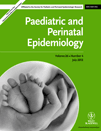
PAEDIATRIC AND PERINATAL EPIDEMIOLOGY
Elevating Pediatric and Perinatal InsightsPAEDIATRIC AND PERINATAL EPIDEMIOLOGY is a premier journal in the field of epidemiology, published by WILEY. Established in 1987, it provides an invaluable forum for researchers, professionals, and students interested in the intersections of pediatric health and perinatal epidemiology. With its strong reputation, the journal holds a distinguished Q2 ranking in Epidemiology and a Q1 ranking in Pediatrics, Perinatology, and Child Health as of 2023, indicating its influential role in advancing knowledge and practice. The journal is indexed in Scopus, boasting impressive rankings, including Rank #52 out of 330 in Pediatrics, with an 84th percentile standing, demonstrating its significant impact in the field. Although not an Open Access journal, PAEDIATRIC AND PERINATAL EPIDEMIOLOGY equips its readers with high-quality research aimed at improving child and maternal health outcomes, making it a vital resource for anyone committed to advancing public health in these critical areas.

Current Environmental Health Reports
Driving impactful dialogue on environmental health policies.Current Environmental Health Reports, published by SpringerNature, is a leading journal dedicated to advancing research in the multifaceted domains of environmental health. With an impressive impact factor and a distinguished Q1 ranking in several categories—such as Health, Toxicology and Mutagenesis, Public Health, and Environmental Science—this journal provides a premier platform for scholars, researchers, and professionals to disseminate their findings. Since its inception in 2014, it has showcased critical studies that address pressing environmental issues, health risks, and regulatory frameworks, guided by a commitment to high-quality research and policy dialogue. Whether through original research articles, reviews, or policy perspectives, Current Environmental Health Reports strives to inform and influence practice and public policy in environmental health, making it an essential resource for those engaged in this vital field. Accessible only through institutional subscriptions, the journal continues to illuminate the interplay between environmental factors and human health through innovative and impactful scholarship.
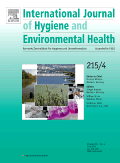
INTERNATIONAL JOURNAL OF HYGIENE AND ENVIRONMENTAL HEALTH
Advancing global health through innovative research.International Journal of Hygiene and Environmental Health, published by Elsevier GmbH, stands at the forefront of research in the fields of public health, environmental, and occupational health. With an impressive impact factor that underscores its significance—ranking #30 out of 665 journals in its category, placing it within the top 5%—the journal is a vital resource for academics and professionals seeking to expand their knowledge and contribute to advancements in the field. Since its inception in 2000, the journal has continually evolved, with its Q1 quartile designation reflecting its high-quality contributions and rigorous peer-review process. Accessible to a global audience, it offers flexible open access options, promoting the dissemination of critical findings on hygiene and environmental health issues. Published in Germany, the journal serves as an essential platform for researchers, educators, and practitioners to share innovative studies, timely reviews, and insightful discussions, driving forward the dialogue on public health challenges and solutions in today's world.
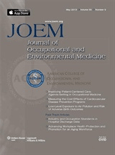
JOURNAL OF OCCUPATIONAL AND ENVIRONMENTAL MEDICINE
Championing evidence-based approaches to health.JOURNAL OF OCCUPATIONAL AND ENVIRONMENTAL MEDICINE, published by Lippincott Williams & Wilkins, is a premier journal dedicated to advancing the field of occupational and environmental health. With a rich history dating back to 1959 and a notable impact factor reflecting its relevance, the journal operates at the intersection of public health and environmental science, ranking in the Q2 category in the 2023 Scopus rankings within its field. It caters to a diverse audience of researchers, healthcare professionals, and students, providing a vital platform for peer-reviewed articles that address critical issues in occupational and environmental medicine. The journal’s mission is to disseminate innovative research findings and establish best practices that improve workplace safety and public health. With a focus on high-quality, evidence-based content, JOURNAL OF OCCUPATIONAL AND ENVIRONMENTAL MEDICINE plays a crucial role in shaping policy and fostering interdisciplinary collaboration among practitioners and scholars in the health sector.
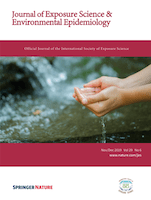
Journal of Exposure Science and Environmental Epidemiology
Exploring the Impact of Environmental Factors on Human HealthJournal of Exposure Science and Environmental Epidemiology, published by SPRINGERNATURE in the United Kingdom, is a leading platform for researchers and practitioners dedicated to understanding the interplay between environmental factors and human health. With an impressive impact factor and Q1 and Q2 rankings across multiple categories such as Pollution and Public Health, the journal has established itself as a critical resource in the fields of epidemiology, toxicology, and environmental science. Covering a wide spectrum of studies from 2006 to 2024, it aims to disseminate timely research that empowers professionals and informs policy decisions. Although there is no open access option at this time, the journal's rigorous peer-review process ensures that only high-quality research is published, further cementing its reputation as a vital source of knowledge for advancing public health and environmental protection.

ENVIRONMENTAL HEALTH PERSPECTIVES
Transforming research into action for public health.Environmental Health Perspectives (EHP) is a premier open-access journal published by the U.S. Department of Health and Human Services, Public Health Science, dedicated to publishing rigorous and impactful research in the field of environmental health. Since its inception in 1972, EHP has become a leading platform for disseminating knowledge on the interactions between the environment and human health, making significant contributions to the fields of toxicology and public health. With an impressive impact factor and a Q1 ranking in both Health, Toxicology and Mutagenesis and Public Health, Environmental and Occupational Health categories, EHP ranks among the top journals globally, reflecting its high citation and visibility within the academic community. Researchers, professionals, and students alike will find a wealth of vital information within its pages, as EHP covers a wide array of topics related to environmental exposures, health outcomes, and policy implications. Furthermore, EHP engages with a global audience through its commitment to open access, ensuring that critical research is available to all, enhancing the collective understanding of environmental health issues since 1972.

Toxicology and Environmental Health Sciences
Navigating the Complexities of Toxicology and HealthToxicology and Environmental Health Sciences is a peer-reviewed journal published by the Korean Society for Environmental Risk Assessment & Health Science, dedicated to advancing the fields of toxicology and environmental health. With an ISSN of 2005-9752 and E-ISSN 2233-7784, this journal serves as a vital platform for researchers, professionals, and students seeking to explore the intricate relationships between environmental risks and public health. Operating from South Korea, it has a converged years span from 2009 to 2024, and currently holds a respectable Q3 quartile ranking in both Health, Toxicology and Mutagenesis and Toxicology. This positions the journal within a critical space for those invested in understanding and mitigating environmental health challenges. Although not an open-access journal, it continues to foster high-impact research, contributing to a better understanding of toxicological sciences and environmental health dynamics. Engage with the latest findings and discussions that shape this evolving field through the insightful articles published herein, reinforcing its importance as a resource for scholars and practitioners alike.
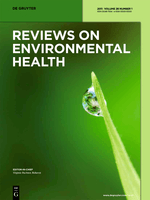
REVIEWS ON ENVIRONMENTAL HEALTH
Empowering research for a healthier planet.REVIEWS ON ENVIRONMENTAL HEALTH, published by Walter de Gruyter GmbH, serves as a critical platform for interdisciplinary research in the field of environmental health. With a history dating back to 1974, this journal has established itself as a reputable source for scholarly articles that address pressing issues at the intersection of public health, pollution, and environmental sciences. The journal is ranked in the Q2 category across multiple domains, including Health (social science), Pollution, and Public Health, evidencing its impact within an increasingly vital discourse. Researchers and professionals will find REVIEWS ON ENVIRONMENTAL HEALTH particularly valuable as it contributes significant insights and fosters dialogue on environmental health challenges and solutions, all while enhancing its global accessibility. The journal maintains a robust presence on platforms like Scopus, ranking in the 90th percentile in social sciences and 86th in public health, further accentuating its importance in the academic community. With access to comprehensive reviews and original research articles, this journal not only enriches the current literature but also paves the way for innovative approaches to safeguarding environmental and public health.
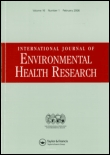
INTERNATIONAL JOURNAL OF ENVIRONMENTAL HEALTH RESEARCH
Exploring the Nexus of Environment and HealthINTERNATIONAL JOURNAL OF ENVIRONMENTAL HEALTH RESEARCH, published by Taylor & Francis Ltd, serves as a cornerstone for interdisciplinary research focusing on the crucial intersections of environmental science and public health since its inception in 1991. With an ISSN of 0960-3123 and an E-ISSN of 1369-1619, the journal spans diverse topics related to environmental health, toxicology, and pollution science, holding high ranks in 2023 such as Q2 in Pollution and Public Health, showcasing its vital contributions to the field. Researchers will appreciate its robust platform as it features rigorous peer-reviewed articles aimed at unveiling the complexities of human health in relation to environmental factors. While the journal maintains a traditional access model, it ensures broad dissemination of high-quality research works. As a reputable source for both emerging and established scholars, the International Journal of Environmental Health Research offers critical insights and advancements pivotal to fostering a healthier planet.
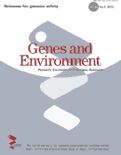
Genes and Environment
Fostering Dialogue on Genetic and Environmental InterplayGenes and Environment is a premier interdisciplinary journal published by BMC that explores the dynamic interplay between genetic factors and environmental influences shaping health and behavior. Since its inception, the journal has gained recognition for its commitment to providing open access (since 2015) to groundbreaking research, fostering an inclusive platform for scholars worldwide. With an ISSN of 1880-7046 and an E-ISSN of 1880-7062, Genes and Environment consistently ranks in Q2 in Environmental Science, Q3 in Genetics, and Q2 in Social Psychology according to the 2023 category quartiles, highlighting its significant contributions to these fields. The journal is headquartered in the United Kingdom and has a diverse portfolio of research spanning from 2006 to 2024. It is recognized in Scopus with commendable rankings across various disciplines. By fostering dialogue among researchers, professionals, and students, Genes and Environment serves as a vital resource for understanding complex biological interactions with environmental factors, ultimately aiming to advance knowledge and inform public policy.